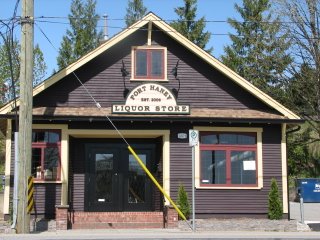The current draft iteration of an Official Community Plan for the District of Maple Ridge will, or should, include clear language with respect to the Agricultural Land Reserve within the context of the GRVD designated green zone. This is no more true today than it might have been in 1900, 1925, 1950, 1976, 1990 or 2005 when the most recent attempt at an OCP was rejected for many reasons by the community in this District. Clear language, reflecting clear thinking appears to be the ever-present Achilles heel of all governments; so it was the 2005 draft of the OCP in Maple Ridge.
The argument? How is Maple Ridge to manage growing population pressures over which it has no control, short of declaring itself a Republic and surrounding itself with a barbed wire fence patrolled by Minutemen? Further, amidst strong protestations from the green lobby and equally forceful arguments from the supply-demand proponents (the latter being lead by the real estate community), the OCP threatens to become a document which attempts to balance and appease rather than a document which guides and directs.
Government is pressured to find a solution to the illusive OCP, but any attempt by the politicians and the bureaucrats seems destined to a rough passage by both the greens and their opponents; those who wish to turn what is green into green-backs.
Sidelined by all this action are the two groups most affected by the outcome of the argument? The largest group is the community itself, 73,000 residents at the last count. The second group; property owners representing private homes, businesses, business parks, farms and acres and acres of speculative land both within the current built environment and well beyond it.
Oddly, the 73,000 and the property owners among them remain ominously silent during the public consultation and then only come out when to protest or support those fractional elements of the OCP which affect them directly. Build a bridge, freeway or tower block within sight of someone and they soon transform from silent majority to salient majority, leaping as it were, into the urban planning fray, projecting vigorously points of view that reflect what may be good for them in the first instance, but which upon deeper study, may be of lesser benefit to the broader community and perhaps even communities beyond Maple Ridge. We are, after all, considered to be part of what is legally described as the Greater Vancouver Regional District. This seems to imply or perhaps aspires to imply that as a part of the GVRD whatever choices we may make are made partly with due respect to our neighbours and those beyond our borders who may be positively or negatively effected by our actions and decisions as a community.
Environmentalists and supporters of our natural and verdant planet see growth as a curse; and do so with every justification, given all the clear signs around us that the earth is well on its way to the cosmic grave at some point in the future. This planet is on life support. Speculators and the business minded agree. Governments agree. The difference is that they are willing to take the risk that it will all work out in the end; and they see growth as an opportunity.
Population growth and all its implications occupy therefore two worlds which often ignore one another. The community entrusts elected and appointed officials to bring these two worlds into a single world that can be safely occupied by all living things for as long as possible, or at least, until this planet becomes uninhabitable.
Can the politicians and staff of Maple Ridge achieve any semblance of Community Consensus with respect to our 5, 10, 20 year Official Community Plan and the role of agriculture? That of course is the job of the community and community leaders, in so far as they should be assisting as much as they can with process. Maple Ridge has a strong tradition of local leadership. Leaders bring the argument to the table. That is what leadership is about. Maple Ridge knows instinctively what it wants as a community. The leaders will define it, the community will decide it.
Last week 450 citizens signed a petition protesting the notion or concept of excluding 300 acres or so from the Agricultural Land Reserve for the purposes of establishing a business park. They were asked to complete the petition by community leaders who approached walkers on the nearby dykes and green paths in the vicinity of the imaginery or imagined business parks. Lets see now; I am strolling along on a pleasant nature walk and I am asked to sign a petition which will preserve the pleasantness of it all. Do I sign or not? While the 450 signatories to the petition were out enjoying their stroll, the rest of the population (say 72,500) were out on the roadways and highways commuting to jobs all over the Fraser Valley. The tactics embraced by organizers are oddly similar to those used by Wall-Mart when they wish to promote a BIG BOX in a particular community.
Of course the concept of work, capitalism, supply, demand and progress are abhorent to us all. Much preferred is the rural life and the gentle contemplation of all that is natural and wonderous. I'm all for chewing the cud and dozing in a farmer's field on a balmy sunny day; would it were that life were like that.


